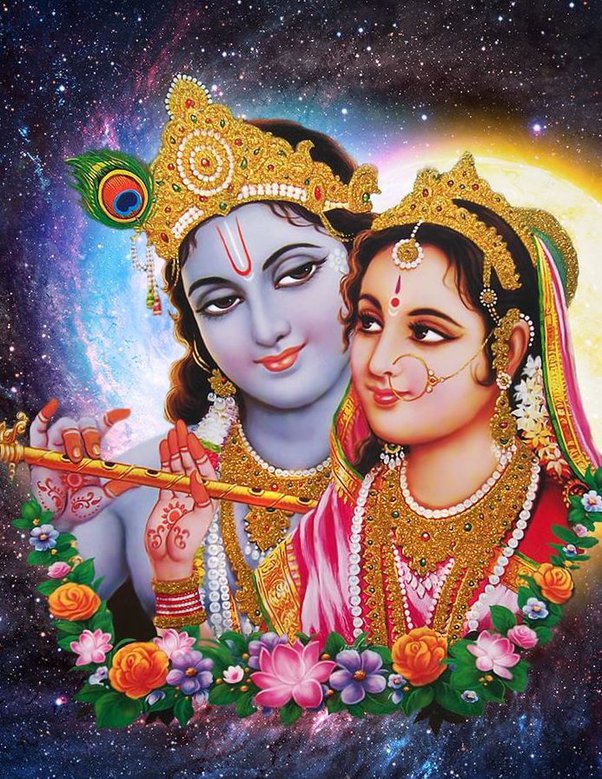Radha and Krishna, the eternal lovers of Indian mythology, have been the subject of countless paintings, sculptures, and literary works for centuries. The story of their divine love and their divine union has inspired artists of all generations to express their creativity through various mediums, including paintings. The tradition of painting Radha Krishna has a long history in India, dating back to the 16th century. Over the years, this art form has evolved, giving birth to several different styles, each unique in its own way.
In this article, we will explore the evolution of Radha Krishna paintings, from traditional to contemporary.
The Tradition of Radha Krishna Paintings:
The tradition of painting Radha Krishna began during the Mughal period in India. Mughal emperors were patrons of the arts, and they encouraged the development of various art forms, including painting. The Mughal painters were skilled in creating intricate and detailed paintings, which often depicted religious themes. The Mughal style of painting was characterized by the use of bright colors, intricate patterns, and delicate brushwork.
The tradition of painting Radha Krishna continued during the Rajput period in India. The Rajput rulers were also patrons of the arts, and they commissioned many artists to create paintings that depicted religious themes. The Rajput style of painting was characterized by the use of bright colors, bold lines, and the depiction of emotions.
During the 17th and 18th centuries, the Pahari school of painting emerged in the Himalayan region of India. The Pahari school of painting was heavily influenced by the Rajput style of painting. The Pahari paintings depicted scenes from the life of Radha and Krishna, and they were characterized by their soft, delicate colors and intricate details.
The Evolution of Radha Krishna Paintings:
The tradition of painting Radha Krishna continued throughout the 19th and 20th centuries. However, during this time, the style of painting began to change. The traditional style of painting, characterized by bright colors and intricate details, gave way to a more modern style of painting, characterized by simpler lines and more muted colors.
One of the most significant changes in the style of Radha Krishna paintings occurred during the Bengal Renaissance in the late 19th and early 20th centuries. The Bengal Renaissance was a cultural and intellectual movement that took place in Bengal, India, during the late 19th and early 20th centuries. The movement was led by a group of intellectuals and artists who sought to promote Bengali culture and identity. The Bengal Renaissance had a profound impact on the arts in India, including the art of painting.
The artists of the Bengal Renaissance sought to break away from the traditional style of painting and create a new style that was more in line with modern sensibilities. They experimented with new techniques and styles, incorporating elements of Western art into their paintings. The result was a new style of painting that was characterized by simpler lines, more muted colors, and a greater focus on emotion and mood.
Another significant change in the style of Radha Krishna paintings occurred during the Indian independence movement in the early 20th century. The Indian independence movement was a political and social movement that sought to end British rule in India. The movement had a profound impact on the arts in India, including the art of painting.
During the Indian independence movement, many artists sought to create paintings that celebrated Indian culture and identity. They sought to create a new style of painting that was uniquely Indian and that reflected the spirit of the Indian people. This new style of painting was characterized by a greater emphasis on simplicity, bold lines, and bright colors.
Contemporary Radha Krishna Paintings:
Contemporary Radha Krishna paintings are a fusion of traditional and modern styles. They incorporate elements of traditional Indian art and culture while also reflecting modern sensibilities and global influences. Contemporary artists use a variety of mediums, including oil paints, acrylics, watercolors, and digital art.
One of the most notable features of contemporary Radha Krishna paintings is their use of vibrant colors. Contemporary artists often use bold and bright colors, creating paintings that are visually striking and captivating. They also use a wide range of color palettes, from earthy tones to neon colors, to convey different moods and emotions.
Contemporary Radha Krishna paintings also focus on capturing the emotions and feelings of the divine couple. They often depict Radha and Krishna in intimate moments, emphasizing the deep love and devotion they share. These paintings convey a sense of warmth, tenderness, and spiritual connection between Radha and Krishna, making them highly evocative and emotional.
Another notable feature of contemporary Radha Krishna paintings is their incorporation of modern elements. For example, some artists incorporate elements of pop culture, such as street art and graffiti, into their paintings. Others use digital art techniques to create paintings that are both modern and timeless.
Buy Paintings Online at Best Prices
Contemporary Radha Krishna paintings also reflect a more inclusive and diverse perspective. Many contemporary artists depict Radha and Krishna with different skin tones and physical features, reflecting the diversity of the Indian population and the global community.





